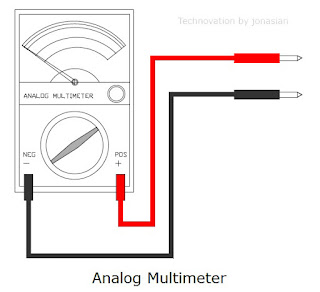You may wonder how this came about in your generation and who to put the blame on. The answer is plain and simple. It all stems from the new course of direction developed by modern teaching methods in your generation which contributed to the influencing factor of disregarding analog multimeters, resulting in making you associate yourselves only with nontraditional methods basing from the assumption of focusing more on digital multimeters since these are devices that are regarded as the most advanced equipment and technique available in the industry, which made you further believe that analog multimeters are obsolete and should therefore belong in a museum. So then you were taught to familiarize yourself only within the confines and comfort of using the simpler and inelaborate automatic functions of digital multimeters during your training years, because this way less teaching time and effort is needed for your orientation with actual electrical circuit analysis.
We can all agree that a digital multimeter is much more convenient to use in terms of interpreting electrical measurement readings, its method of operation is quite simple, all you need to do is to only set the meter appropriately to the required measurement unit (i.e. voltage, current or ohms) and it will do the rest for you by self adjusting to the detected measurement range of a particular unit of measurement for the circuit being tested, bearing in mind that it would most likely be equipped with auto ranging scale feature. Next you simply connect the multimeter test leads to the electrical circuit you are diagnosing and finally you just read the measured numerical value indicated directly on the digital display of the meter, it’s that dead simple.
 |
| Fig.1: Typical Analogue / Analog Multimeter |
To cite a clear explanation to purely emphasize on the difference between the two, a good example would be the distinction on the order of priority between learning to drive a manual and an automatic transmission vehicle. Everyone would most certainly agree that it would be more beneficial to learn to drive manual vehicles first before learning to drive automatic vehicles, and not the other way around. Because knowing how to drive a manual or stick-shift vehicle gives you the primary advantage and benefit of having the ability to drive just about any vehicle later on.
The same thing holds true with multimeters. An analog multimeter may be old fashioned and more complicated to use and requires more user involvement, but learning to use it provides more interaction between you and the electrical circuit through the analog meter, making you more acquainted and efficient with electrical circuits as you learn to develop your skill and increase your familiarity with circuit analysis from understanding the significance of the scale range variation of electrical measurement values which in effect renders more favourable result when compared to the disadvantage of habitually relying on the auto ranging scale feature of a digital multimeter.
Another important point to consider is that analog multimeters provide more reliable result when used as a visual aid in measuring highs and lows in electrical circuits due to its swift reaction to even the slightest change of measurement values, immediately causing quick responsive deflection of its dial pointer, which makes it very easy for the user to distinguish the changes taking place right away, unlike digital meters which would behave more erratic by showing confusing readings due to delayed response when applied to measure rapid high and low readings, making digital meters less efficient and ineffective in this case.
Below you will find an illustrated list of affordable analog multimeters guaranteed to fit your budget, I'm sure it will not require any persuasion for you to decide, so go right ahead and pick your choice. It's a bargain and a good option for you to finally own a good cheap analog multimeter if you're looking for something inexpensive yet worth having, and just enough to fit your needs.

